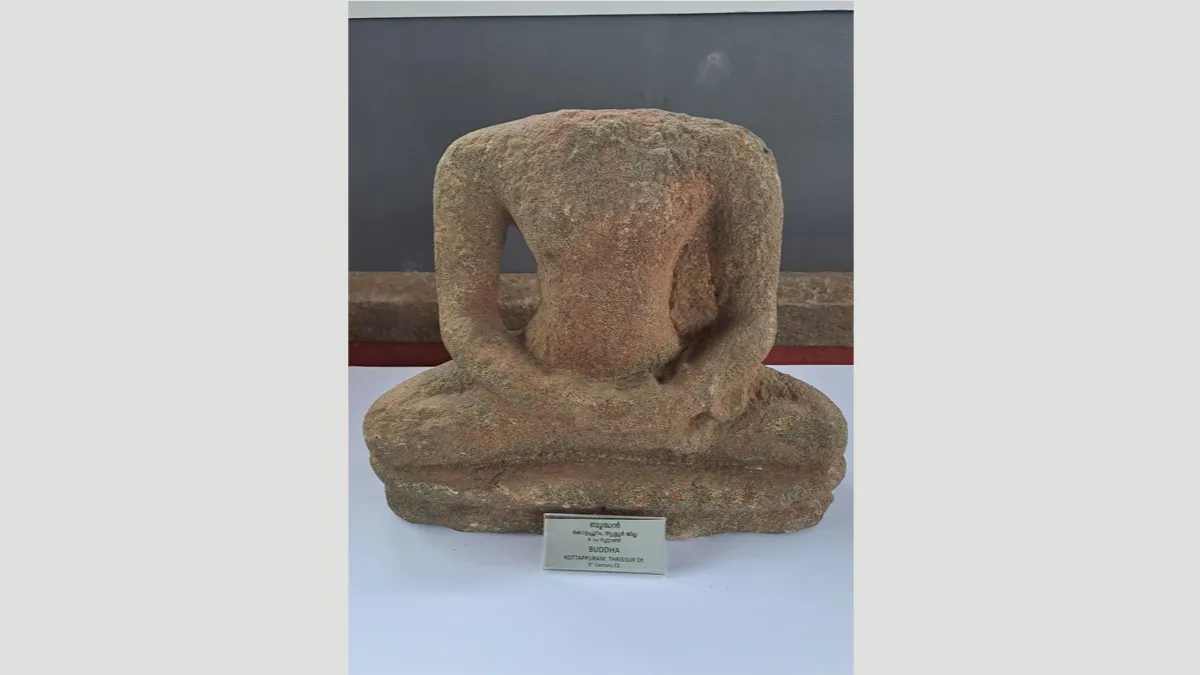Keralathaara, an exhibition organised in connection with the ongoing Keraleeyam displays a range of relics and artifacts
04 Nov 2023
News Event
A headless Buddha sculpture was being used to tie a country boat to keep it from floating away in the river. It was discovered during investigations from the area of the Kottapuram fort near Kodungalloor in the Thrissur district in 2007.
The Portuguese built the fort, also called Cranganore Fort, in 1523. Since the Archaeology department started conducting study at Kottapuram in 2000, a large number of items have been found close to the fort.
One of the attractions of Keralathaara, an exhibition hosted by the Archaeology department at the bandstand of Kanakakkunnu Palace in connection with the current Keraleeyam, is the Buddha sculpture, which is said to have been created in the ninth century.
The exhibition features relics from the Neolithic period, such as burial urns and implements, as well as oracle anklets and badges from the former Travancore.
The oldest light discovered in the state, a rusted iron lamp from a megalithic chamber in Kudallur in the Palakkad region, is on exhibit. Presumably, it was carried along and hung to chase away the darkness. A dagger from Kudallur, a hook from Kakkodi in Kozhikode district, an arrow and sickle discovered in Kattakambal in Thrissur district, and an axe from Nedumkandam in Idukki district are among the other items from this era that are on exhibit in a glass case at the expo.
Another interest is a rare four-legged clay jar that was unearthed within chambers with rock cuts in the Kozhikode district of Arikkulam. One similar chamber in the Kozhikode district's Kakkodi produced a ring stand and a ceramic bowl. These two are thought to be between two and five thousand years old. The same time is represented by a jar from Koottilangadi, a terracotta pot from Nedumkandam, and another terracotta bowl discovered in the Malappuram area.
These rooms were used for reburial, according to archaeology authorities on hand to answer questions from exhibition attendees, and items thought to be useful in the afterlife were discovered there. Bowls filled with bones have been found in several of these rooms; other finds include grains, husks, chisels, and strings of terracotta beads.
A displayed burial urn from Chelannur in Kozhikode dates back between 2,000 and 2,500 years. According to officials, many bones had been discovered inside.
There are also on display Neolithic stone axes that date back over 3,000 years and were found in Kalady in Ernakulam and Cheemeni in Kasaragod. Most of the Stone Age artefacts discovered in the State are from the Mesolithic and Neolithic periods. In contrast to the Neolithic age, when tools were more polished and advanced, the Mesolithic era employed fewer than 3 cm implements in geometric designs.
